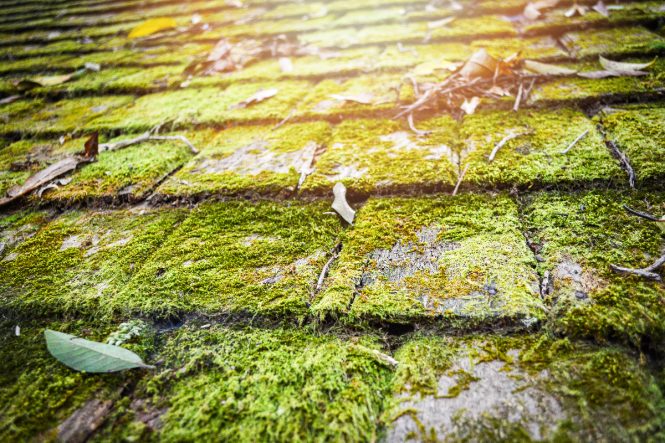

Roof moss growth is a common problem that can affect many roofs. Understanding how to effectively remove roof moss growth is crucial for maintaining your roof’s health and beauty. This comprehensive guide provides practical steps and expert advice to tackle this common issue, from prevention to professional removal options. We will delve into the causes, diagnosis, prevention, and removal methods for roof moss, offering insights into the best course of action for your specific needs. This article is structured into sections covering the reasons behind moss growth, preventative strategies, different removal techniques, and crucial factors to consider for long-term solutions. Let’s explore each stage in detail.
Understanding the Causes of Roof Moss Growth
Identifying the Roots of the Problem
Roof moss growth is often a result of a combination of factors. Moisture retention is a critical contributor. Areas of your roof that experience prolonged moisture exposure are more susceptible to moss growth. This often includes shaded areas, gutters and downspouts that are not functioning properly, and areas experiencing pooling of water. Poor roof ventilation can also play a significant role. Lack of airflow can trap moisture on the roof surface, creating an ideal environment for moss to flourish. Another factor is the type of roofing material. Certain roofing materials, such as asphalt shingles, can be more susceptible to moss growth than others, particularly if they are not properly maintained. Lastly, the surrounding environment also plays a role. High humidity levels combined with a consistently damp environment can foster moss growth.
Effective Preventative Measures
Proactive Strategies to Keep Moss Away
Preventing roof moss growth is often more economical and efficient than dealing with the consequences of extensive growth. One key preventative measure is improving roof ventilation. Good ventilation helps to reduce moisture buildup on the roof surface. Regular roof maintenance and inspection is also essential. Check for and promptly address any leaks or issues with gutters or downspouts that could lead to water pooling. Cleaning gutters and downspouts at least twice a year can help ensure proper water drainage, reducing the chances of water accumulating and promoting moss growth. Using sealant to seal any gaps or cracks in the roof can also be a proactive preventative measure. This can prevent moisture from penetrating the roof and creating ideal conditions for moss. These actions help maintain your roof and reduce future problems with moss growth.
Practical Techniques for Removing Roof Moss
Mechanical Removal Methods
Removing roof moss can involve several methods, ranging from simple DIY techniques to professional services. A basic technique is to use a pressure washer to remove loose moss from your roof. However, be cautious and ensure the pressure is not so high that it damages your roof shingles or other roofing materials. A specialized moss removal solution can also be applied directly to the affected area to loosen the moss and make it easier to remove. Using a stiff brush or scraper, gently remove the loosened moss. Always wear protective gear, such as safety glasses, gloves, and a mask, when cleaning or removing roof moss. In some cases, a professional roofing contractor may be required to properly remove the moss to ensure no further damage to the roofing surface or underlying structures.
Long-term Solutions and Considerations
Strategies for Preventing Recurrence
Once the moss has been removed, consider long-term solutions to prevent its return. Addressing underlying issues such as poor ventilation or drainage can be crucial. Improving roof ventilation through the installation of proper vents can help regulate moisture and prevent future moss growth. Ensuring proper gutter and downspout functionality is also important to prevent water accumulation and pooling. Regular roof maintenance inspections and cleaning are crucial. Identify areas prone to water damage and address them promptly to minimize the chances of future moss growth.
Identifying Potential Issues & Addressing Them Promptly
Avoiding Further Damage and Future Problems
Proper identification of the cause of roof moss growth is important. Inspecting your roof for any signs of damage or leaks is essential to prevent further damage to the roof and underlying structures. Consulting a professional roofer for a thorough inspection can be beneficial if you are unsure about the extent of the damage. Addressing these issues proactively will save you money and prevent further damage in the long run.
Frequently Asked Questions
How often should I inspect my roof for moss growth?
Regular inspections, ideally at least twice a year, are recommended. This is crucial for early detection of moss and other potential issues. Inspecting your roof after periods of heavy rain or high humidity will help ensure you catch any developing problems before they escalate.
What are some DIY options for removing roof moss?
Some DIY options include using a pressure washer (with caution) or a specialized moss removal solution followed by scrubbing with a stiff brush. However, if the moss growth is extensive or you aren’t confident in these techniques, hiring a professional roofing contractor is highly recommended to avoid potential roof damage.
In conclusion, tackling roof moss growth is a crucial homeowner responsibility. By understanding the causes, implementing preventative measures, and knowing the best removal techniques, you can safeguard your roof’s health and curb appeal. Regular inspections and prompt action are key to preventing extensive damage and costly repairs. Contact a qualified roofing contractor for professional help if needed, or delve deeper into DIY methods for a more budget-friendly approach.